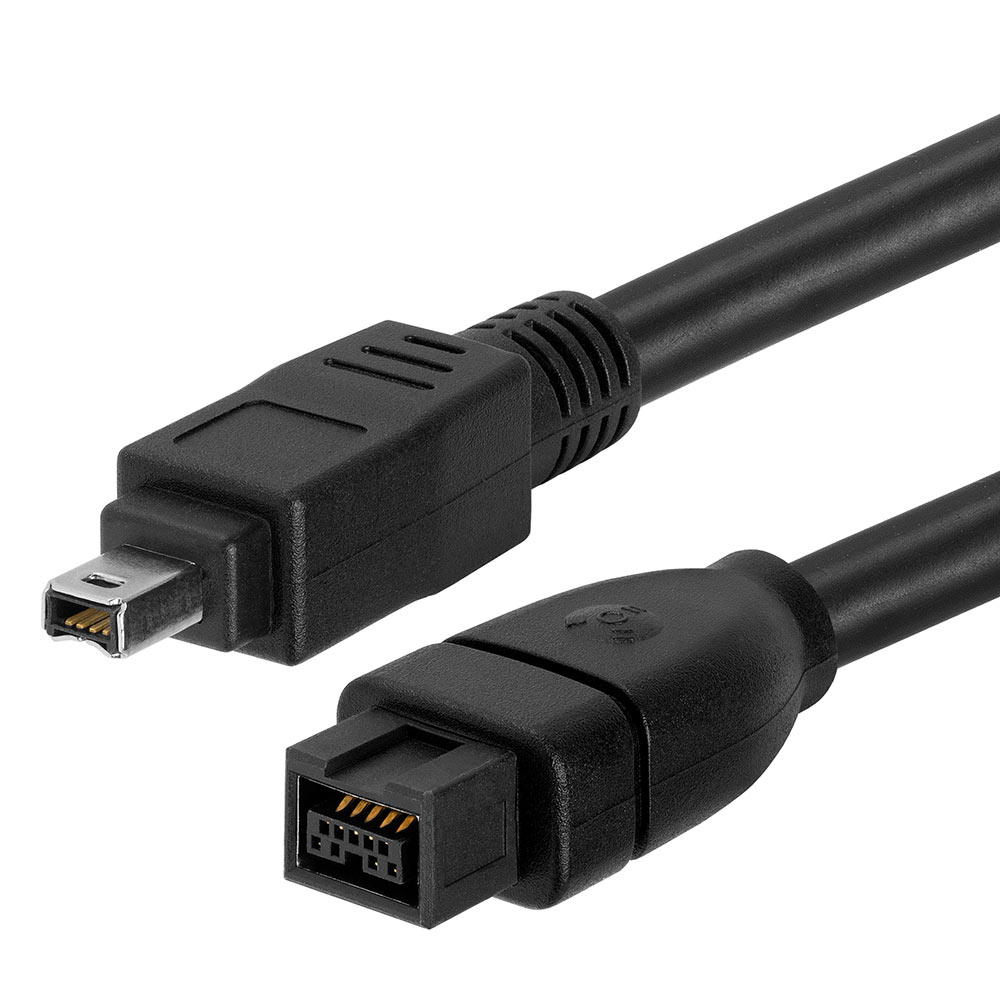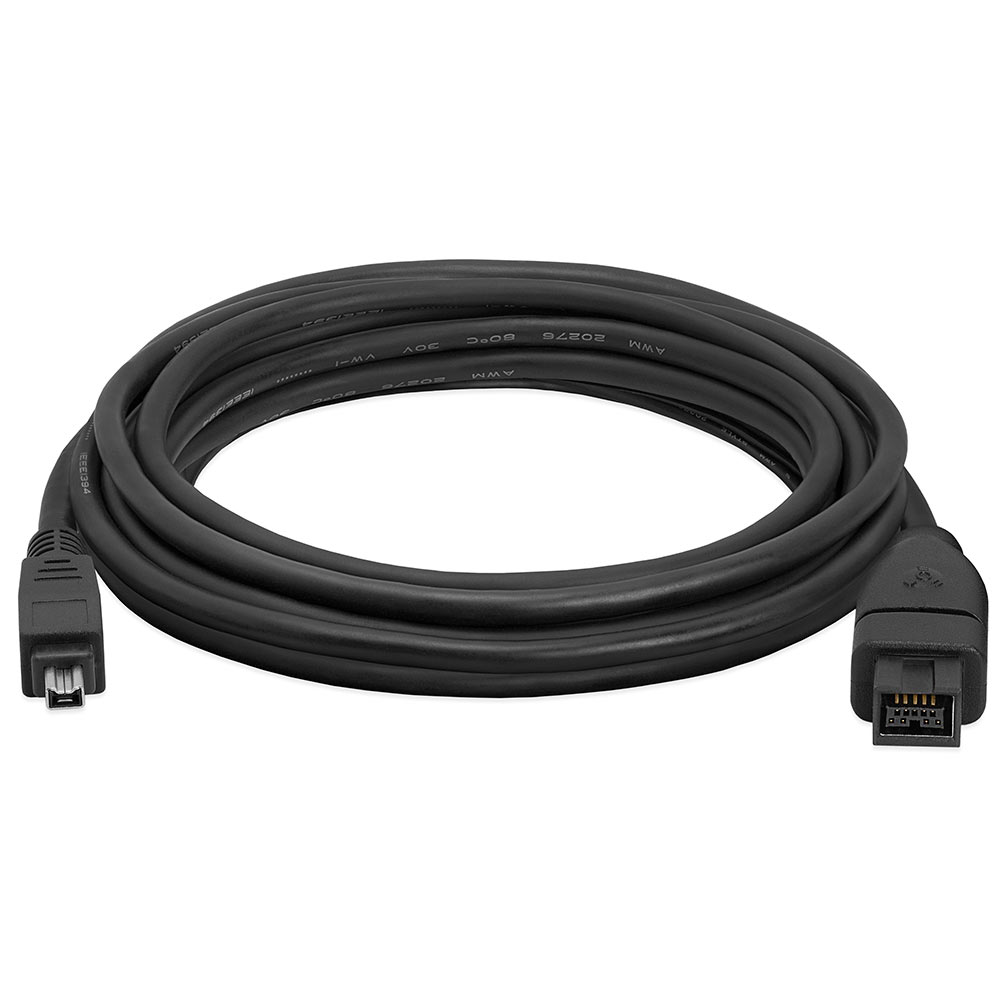FireWire Cables
These cables were developed during the last two decades of the last century by Apple. FireWire cables are also known as IEEE 1394 interface. FireWire cables are basically used with the standard serial bus interface that helps with communication at high speed and also uses isochronous real-time data transfer.
USB cables are often compared with these FireWire cables though USB cables are used more readily. It was not until 1999 that Apple introduced ports for FireWire cables. Since then, many Apple computers have introduced ports for these cables. The cables have proved to be replacements for many SCSI parallel cables due to their low implementation costs and simplified cable system. Using isochronous protocol, FireWire cables are also available in fiber optic, coaxial and wireless versions. It is the standard connection for audio/visual components decreed by HANA (High-Definition Audio-Video Network Alliance).
FireWire Cables
FireWire cables are used for high speed transfer of data and are based on serial bus architecture. The serial bus architecture allows data to be transferred bit by bit instead of in packets. Though parallel buses may seem more apt for data transfer, they require many different physical connections, are more costly, are less efficient and are also heavier.
FireWire cables support asynchronous and isochronous applications making the cables more versatile and efficient. These cables were initially created to be low cost replacements for audio and video equipment that worked on digital equipment.
The cables are commonly used to connect digital video cameras and data storage devices. However, over the years the cables became popular for professional audio systems and machine vision in the industrial sector. Because of its better power and speed distribution system, it is preferred over its popular counterpart, the USB cable.
The basic and most important reason for the popularity of FireWire cables is that it provides high data transfer rates, use all features of a standard SCSI cable and also help audio and video editors. The only reason that it has still not been possible to capture the USB market is that the hardware is expensive and the cost of the cable has proved to be a major constraint in its popularity.
Data Transfer Method
Using isochronous and asynchronous methods to transfer the data, the cables use the D/S (data strobe) encoding method. Different gates transfer the data to the node that will carry the encoded signal to the device. The process of arbitration is used to decide which node will be used for the transmission of data.
Technical Details
The daisy chain or tree topology FireWire cables can connect up to 63 peripheral devices. The beauty of the cable is that it allows two peer devices to communicate without the use of a CPU or system memory. This means that you can easily connect a scanner and a printer with each other without placing a CPU in between. The cables also allow one bus to have multiple hosts. It supports different features like hot swapping and plug and play.
The cables are made using copper cables and are more flexible compared with standard SCSI parallel cables. The cables are usually up to 15 feet long and come in two variations: the six-conductor and nine-conductor. These variations can supply power of up to 45 watts on a 30 volt voltage per port. This allows the cables to activate devices with moderate power consumption. The 9-conductor FireWire cables are relatively new and have backward compatibility that allows them to work easily with the slower and older 6-conducor wires.
The first FireWire cable could easily transfer data at 100, 200 or 400 Mbps between different devices. Using the daisy chain method, around 16 cables can be interconnected at a time with the length of one cable not surpassing the standard 4.5 meters. The cables can be easily connected using different internal and external hubs or active repeaters.
Comparison with USB Cables
Even though the end result of a FireWire cable and a USB cable is the same, the process in which each cable attains the result is different. USB cables require the presence of intelligent hubs that connect devices and transfer data using the bus master phenomenon.
On the other hand, FireWire cables do not require any intelligent hubs and the data is transferred using peer-to peer networking. This way more than one device can be connected to a single bus. The data is transferred with the help of memory mapped or DMA (direct memory access) devices. There is no requirement of a CPU to transmit data and significant time is saved because of the elimination of buffer-copy and CPU operations.
A USB transfers data using only one data bus whereas there are two buses in a FireWire cable. The use of two buses allows a FireWire cable to communicate in both directions at the same time while a USB cable can communicate in one direction at a time. Devices that are connected with a FireWire cable usually map the internal memory on the physical memory space of the cable. Using Serial Bus Protocol-2, a request is sent by writing a remote command in the specified area of the Fire Wire’s address space. The address is retrieved from the physical address space of the device that had initiated the data transfer. The mapping process between the physical memory of the device and that of FireWire’s physical memory space is done without any intervention from the operating system directly in the hardware.
Though this process of direct mapping increases transfer time and enables higher speed, it does pose as a security and media risk. It is for this reason that high security installations will prefer the purchase of new machines that allow the mapping to be done on the virtual memory space of the FireWire cable.
It is possible to use the feature for a machine whose operating system requires debugging. It can also aid with remote console operations in different systems.
The advantages and ease of use of FireWire cables has resulted in their popularity and many different devices now provide an option for the use of these cables.
You can easily buy FireWire cables at Cmple
References
http://en.wikipedia.org/wiki/IEEE_1394





